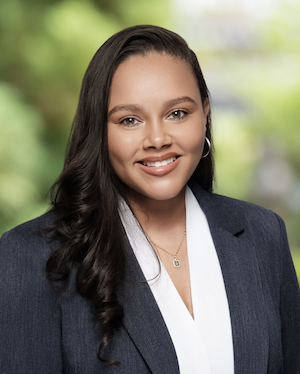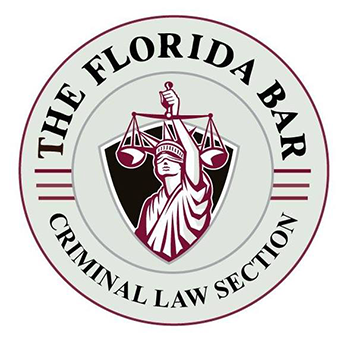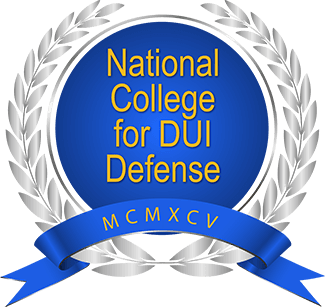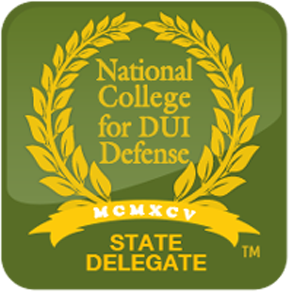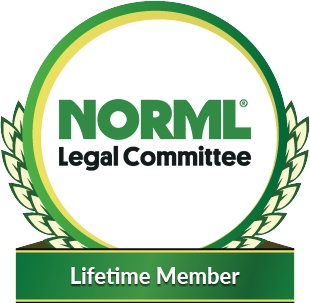Calibrations Procedures on the Intoxilyzer 8000
Why does Florida suddenly have new calibration certificates for the Intoxilyzer 8000?
Form 41 of the ATP’s Department Inspection report is set in formatting by Rule 11D-8. The reason for the calibration certificates is because it was required for FDLE’s Alcohol Testing Program (ATP) to achieve and maintain accreditation as a Forensic Science Calibration Laboratory through the
ANSI National Accreditation Board.
Accreditation was first achieved in May 14, 2018. ANAB is similar to CALEA and ASCLD-LAB because, for a price, it gives a forensic agency the ability to claim that it has 3rd party accreditation. For the law enforcement community, it means they can now claim to meet the standards required by ANAB which a layperson might think means they are sound scientific practices.
The ANAB requires “uncertainty of measurement” for calibration results. The form or report was created to meet this ANAB standard.
The “uncertainty measurement” means that the values listed explain that a Department Inspection will fall within a set range 99% of the time. So the instrument will return a reading such as a sample of 0.08 g/ 210 L accurately during a Department Inspection to within ±0.004 based on all Department Inspections during the previous calendar year
One of the best ways to learn more about Florida’s Intoxilyzer 8000 is to read the calibration procedures set out in the FDLE’s Alcohol Testing Program Procedure Manual.
FLORIDA DEPARTMENT OF LAW ENFORCEMENT
Alcohol Testing Program Procedures Manual
2.5 Intoxilyzer 8000 Calibration Procedures
History: 1/2010; 1/2011
GENERAL INFORMATION
The following procedures should be used when calibrating an lntoxilyzer 8000.
PROCEDURES
CALIBRATION PROCEDURE FOR THE INTOXILYZER 8000
1. Scope
This procedure applies only to the CMl, lnc. lntoxilyzer 8000.
2. Purpose
The following pages define the calibration procedure used by the FDLE Alcohol Testing Program for the calibration of the lntoxilyzer 8000.
3. Personnel
Only Alcohol Testing Program members who have successfully completed the CMl, lnc. training program in the operation, maintenance, repair and calibration of the lntoxilyzer 8000 may perform this calibration.
4. Safety
All required safety measures in place for the protection of personnel and equipment shall be observed. This includes the FDLE Safety Manual and the Material Safety Data Sheets on high pressure alcohol- nitrogen gas, acetone, and alcohol reference solutions. ln addition, when working on exposed electronic circuits all electrical safety precautions will be taken.
5. Equipment (Process Dependent)
5.1 Five wet bath simulators containing distilled or deionized water or alcohol reference solutions. The alcohol reference solutions must be from a different manufacturer than the solutions used in Department lnspections. The five alcohol concentrations are:
5.1.1 0.000 g/210L
5.1.2 0.040 g/210L
5.1.3 0.080 g/201L
5.1.4 0.100 g/210L
5.1 .5 0.300 g/210L
5.2 0.08 g/210L dry gas standard certified by the manufacturer
5.3 Cole Palmer 3000 Series Flow Meter
5.4 Druck DPI 705 digital atmospheric pressure gauge
5.5 External printer for documentation purposes
6. Setup and stabilization Periods
6.1 The instrument under calibration (lUC) will be inspected for damage, loose hardware, or missing external parts. The simulators and hoses will be inspected for leaks.
6.2 The IUC and the simulators will be plugged in and turned on.
Note: if the instrument has been repaired, messages may display when first turned on due to the fact that no data has yet been entered into the instrument.
6.3 Ensure that an external printer is connected and powered on or that there is sufficient thermal paper in the internal printer of the instrument, and that a NIST traceable ethanol/nitrogen dry gas standard cylinder is attached.
6.4 Check the IUC for the proper setup configuration, for example, the agency name is correct, the software installed is the current version, the proper breath test pattern is chosen, the date and time are correct, etc.
6.5 No calibration will be performed until the simulators have warmed up for at least 30 minutes and the IUC is ready and out of its warm-up mode.
6.6 When the IUC comes out of its warm-up mode, it performs a diagnostic check. The printout should read as follows:
Voltage/Current Test – Pass
RAM Test – Pass
EEPROM Checksum Test – Pass
Real Time Clock Test – Pass
DSP Test – Pass
Analytical Stability Test – Pass
lnternal Printer Test – Pass
Modem Test – Pass
Temperature Regulation Test – Pass
Note: If this is the first calibration of the instrument, the EEPROM Checksum Test will fail. Also, the Analytical stability Test may fail due to existing invalid calibration data.
6.8 lf any of the diagnostic elements shown above fail and this cannot be explained by repair of the instrument, the calibration must not proceed. lnstead, submit the IUC for diagnostic examination and repair. Otherwise, continue with the procedure.
7. Calibration Procedures
7.1 Proceed to the third level menu (D, M, S, T), select M
Note: If the IUC has been repaired and fails diagnostics on the transition to Ready Mode, it will li automatically drop back into Standby Mode. Press the green Start test button, wait until the timer has counted down to approximately 15 seconds, then press Escape, Escape and follow the normal procedure to get to the third level maintenance menu.
7.2 The maintenance menu will appear (D,S,l,R,C). Select C.
7.3 The calibration menu will appear (G, F, O, l), allowing calibration of the gas tank sensor (G), the flow sensor (F), the optical bench (O), and the internal tests (l). These are four (4) independent calibration procedures.
7.4 Gas sensor calibration
7.4.1 Select “G” from the menu when a gas sensor calibration is to be performed.
7.4.2 The display will show “CAL TANK SEN (Y/N)?” Choose “Y”
7.4.3 The display will instruct the technologist to remove the gas cylinder and then to press any key to tare (sic). Follow the instructions on the display. This zeros the tank pressure offset for the regulator attached.
Note: this step must be performed anytime the regulator is changed.
7.4.4 The display will now return to the previous menu (G, F, O, l).
7.5 Flow sensor calibration
7.5.1 Select “F” from the menu when a flow sensor calibration is to be performed.
7.5.2 The display wilt show “CAL FLOW SEN (Y/N)?: Choose “Y”
7.5.3 The display will show “PROVIDE 5L/MlN PRESS KEY TO PROCEED”.
7.5.4 Turn the compressor on.
7.5.5 Adjust the flow on the compressor to maintain a steady flow of 100 mm on the flow meter.
7.5.6 Reduce the flow at the flow meter until the meter reads 17 mm.
7.5.7 Connect the flow meter output to the instrument breath hose. Allow air to flow into the instrument for approximately five (5) seconds.
7.5.8 Push “ENTER” on the instrument to store the 15L/min flow rate.
7.5.9 Adjust the flow meter to show a flow rate of 53mm. Allow air to flow into the instrument for approximately five (5) seconds.
7.5.10 Push “ENTER” on the instrument to store the 15L/min flow rate.
7.5.11 Adjust the flow meter to show a flow rate of 103mm. Allow air to flow into the instrument for approximately five (5) seconds.
7.5.12 Push “ENTER” on the instrument to store the 3OL/min flow rate.
7.5.13 The display should read “CALIBRATION SUCCESS”.
7.5.14 lf the calibration is successful, conduct flow sensor checks in accordance with the Flow Sensor Check Procedures in Procedure 2.2. If the calibration is not successful, take corrective action and repeat the flow sensor calibration.
7.5.14 The printout from the above procedure should be similar to the following EXAMPLE:
Flow Rate Calibration*****
1. Rate (Liters/min) = 5
SQRT(DIFF) = 6.781
2. Rate (Liters/min) = 15
SQRT(DIFF) = 11.266
3. Rate (Liters/min) = 30
SQRT(DIFF) = 21.516
Dependent Data Scale Factor = 100000 L/min
lndependent Data Scale Factor = 256
Rounded Slope = 647
Rounded lntercept = .517751
Correlation = 0.66426
7.6 Optical Bench Calibration
7.6.1 The display should read “G, F, O, I”. Select “O”.
7.6.2 The display should read “CAL OPT BENCH (Y/N)?’ Select “Y”.
7.6.3 The instrument will perform an “AlR BLANK’ followed by “MAXIMIZING SOURCE” followed by another “AlR BLANK” and ‘AUTORANGING SOURCE’. This is followed by a “DIAGNOSTICS”.
FLORIDA DEPARTMENT OF LAW ENFORCEMENT
Alcohol Testing Program Procedures Manual
Note: An error may appear during diagnostics. This is because no previous data has been set up in memory. lf this occurs, continue with calibration.
7.6.4 The instrument will then display “# SOLUTION TO RUN: 3”. Press the number “5” followed by ENTER to indicate the five solutions that will be used to calibrate the instrument.
7.6.5 The instrument will then ask for the values of the solutions used. Starting from the lowest (0.000) to the highest (0.300), enter the following nominal values (e.g. enter “0.08 for the 0.08 solution). Ensure that the underscore key ( _ ) is in the proper position to enter the correct values. Enter all values when prompted. lnstrument will display “Enter Solution
#1, followed by “Enter Target Value” Enter “0.000” lnstrument will display “Enter Solution
#2, followed by “Enter Target Value” Enter “0.040” lnstrument will display “Enter Solution
#3, followed by “Enter Target Value” Enter “0.080” lnstrument will display “Enter Solution
#4, followed by “Enter Target Value” Enter “0.100′ lnstrument will display “Enter Solution
#5, followed by “Enter Target Value” Enter “0.300”
7.6.6 The instrument will display “CAL GAS H20 ADJUST?” Press “Y” followed by ENTER.
7.6.7 The instrument will display “CURRENT PRESSURE ####”. Enter the atmospheric pressure in millibars (whole units) from the Druck DPI 705 NIST traceable digital pressure gauge. The instrument will then display “CALIBRATION SUCCESS” (barometric sensor calibrated).
7.6.8 The instrument will then display “ENTER TARGET VALUE: (GAS)”. Enter “0.080”. The IUC will then AtR BLANK.
7.6.9 The instrument will prompt the user to connect the first simulator, which is always the distilled water simulator. The instrument will conduct four analyses of the O.OOO standard and print out data.
7.6.10 Follow the instrument prompts and connect the appropriate simulator when instructed to do so. The instrument will conduct four analyses of each standard attached. The results of the samples will be printed after the last sample is collected for that particular solution value. After all the solution values have been sampled, the auto cal data will be printed.
Note: If the relative standard deviation is outside acceptable tolerances, the instrument will ask “RE-RUN SOLUTIONS?” Ensure that there are no leaks in the simulators and connective tubing, then answer “Y”.
7.6.11 The instrument will display “PREPARE 0.080 G/210L PRESS KEY TO PROCEED”. Attach the dry gas standard cylinder tubing to the lntoxilyzer calibration inlet port and press ‘ENTER”. The instrument will conduct four analyses of the standard.
7.6.12 lf the calibration is successful, conduct stability checks in accordance with the Stability
Check Procedures in Procedure 2.2. If the calibration is not successful, take corrective action and repeat the optical bench calibration.
2.6 INTOXILYZER 8OOO ELECTRONIC DATA REVIEW
History – 10/2007; 1/2011; 5/2011
AGENCY INSPECTION ELECTRONIC DATA
Department lnspectors will review agency inspection electronic data of their assigned evidentiary instruments at least once each month to ensure compliance with Agency lnspection Procedures- lntoxilyzer 8000 FDLE/ATP Form 39.
The Department lnspector shall review the inspection data in its entirety and confirm the following:
- The inspection data for all checks and tests must be reviewed for compliance with Chapter 11D-8, FAC.
- Lot numbers of alcohol reference solutions must correspond to approved and non-expired lots. Dry gas standard lot numbers must be relevant and non-expired.
- At least two reference sample devices must be used.
- Reasons for repeated checks or tests must be recorded. Remarks concerning corrective action must be recorded.
- The determination of complies/does not comply must accurately reflect the results of the inspection. The Department lnspector should complete an Agency lnspection and Other Electronic Data Review document for any discrepancy determined from their review, send a copy to the agency inspector, and submit this document to the Program Manager. Discrepancies include:
- lncomplete (for example, blanks not filled in, boxes not checked, missing results, or missing signature)
- Procedural (for example, expired solution or dry gas used, improper or inadequate equipment, wrong procedures, stating complies when it does not)
- Untimely/Not Received (for example, no data in database for the month)
- Erroneous lnformation (for example, lot numbers wrong, misspelling); and
- Other (to be inserted in the blank space provided).
The Department lnspector is responsible for the receipt of amended documentation or requested written explanations as indicated on the Agency lnspection and Other Electronic Data Review document. The Department lnspector will submit all amended agency inspection reports or written explanations to the Program Manager.
SUBJECT TEST ELECTRONIC DATA
The Program Manager or designee will review breath test electronic data at least once each month. Any action in reference to operator training will be prepared in writing and sent to the breath test operator via the agency inspector.
Any action in reference to the instrument will be prepared in writing and sent to the agency inspector. Department lnspectors will be responsible for ensuring any requested documentation, when applicable, is received based on the review.
OTHER ELECTRONIC DATA
Department lnspectors will review cylinder change, login records, control test and diagnostic test electronic data of their assigned evidentiary instruments at least once each month. This data is reviewed for the following:
- Cylinder Change records will be reviewed for valid lot number and expiration date.
- Login Records will be reviewed to ensure only permitted persons are logging into the instrument’s menu function.
- Control Tests and Diagnostic Checks will be reviewed for instrument functionality.
The Department lnspector should complete an Agency lnspection and Other Electronic Data Review document for any discrepancy determined from their review, send a copy to the agency inspector, and submit this document to the Program Manager.
The Department lnspector is responsible for the receipt of amended documentation or requested written explanations as indicated on the Agency lnspection and Other Electronic Data Review document. The Department lnspector will submit any amended documentation or written explanations to the Program Manager.
This article was last updated on Friday, September 25, 2020.





